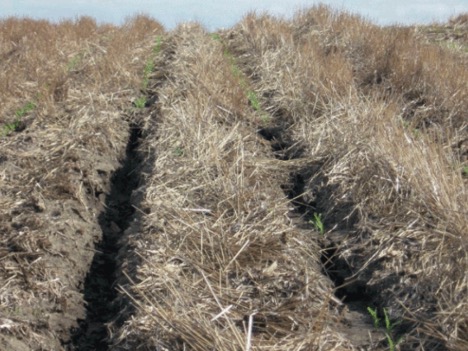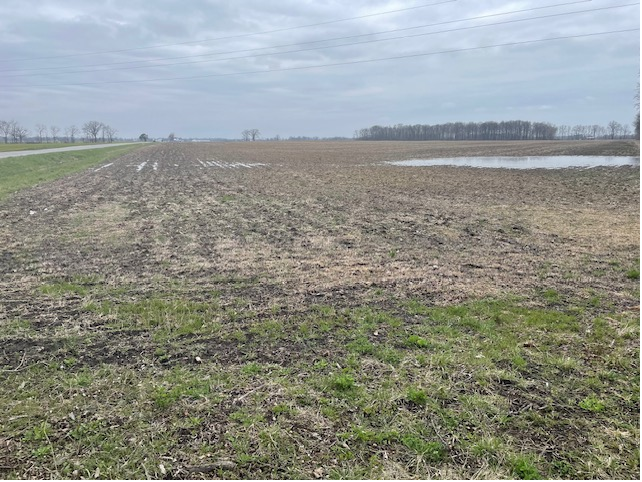by Ethan Begle, Technical Service
“For every person that says it can’t be done, there’s already someone on the other side of the fence doing it.” The concept of no-till farming has been around for far longer than most growers realize. A quick drive across the countryside reveals that no-till is still slow to become the majority when it comes to the ideal seedbed farmers are after. A lot of factors go into this decision, a basic level assumption being, “that’s the way it’s always been done”, as well as chasing higher yields. Other factors as to reasons to till the soil: weed control, smoothing out erosion, incorporating fertilizer & manure, drying out the soil, and compaction from heavy equipment. There are viable reasons to till the soil on occasion but tilling the soil more than once every four years creates more problems than it solves. If it’s too wet to plant, it’s too wet to till.

Referencing this no-till farmer article>> brings great perspective from Paul Jasa (Univ. of Nebraska), “Tillage always destroys soil structure.” Any disturbance to soil structure reduces the pore space of the soil and that collapse of space is compaction. On that same drive through the country looking at tilled fields, have you noticed how much lower the field has gotten compared to grass along the edges? Even in backyard, long-term gardens that get tilled every year, the garden bed is usually lower than surrounding grass and water ponds. (Yes, no-till gardens are possible and successful with cover crops & heavy straw mulching). It’s comical they call field cultivators “diggers” so they can go dig the field out, which seems to literally be happening: as soil structure leaves, so does the level of the field. It’s a conundrum to till the soil to dry it out and then pray for rain to bring moisture back. Bare soil will be hotter all summer long until the crop canopies. Too much moisture is also a soil structure problem, and roots are needed to use the excess moisture as well as building the soil with exudates and root channels to help with drainage. Tile drainage helps, but most fields would better utilize their excess moisture (improving the soil) through growing crops. You can increase your cropping intensity, whether it’s cover crops or cash crops.
Using tillage to incorporate manure and fertilizer, burying them so that volatilization (nitrogen) and manure smell is lessened, is helpful. Fertilizer placement is a large reason strip-till is gaining so much popularity. Planting early into cold soils and managing residue so planting is “easier” are other reasons cited as advantages to strip-till (Although a good set of row cleaners on the planter can get a clean wide strip also).
Placing fertilizer deeper (6-8”) is said to encourage deeper rooting and better access during dry weather where there is still moisture for plant uptake. Having a seedbed that’s like potting soil is not conducive to the way planters are designed today. A hoe drill unit would be better suited to the loose conditions of strips. It still takes adequate down pressure on a planter unit to get enough sidewall pressure to maintain furrow integrity until the seed is placed. The other side of deep fertilizer placement is in drought conditions: a quick shower can come through and that water is funneled to the roots in which shallow-placed fertilizer would be available for immediate uptake. Most of the soil biology is found in the top 6” of soil. If you have a good thatch of residue left on top to keep the soil cool, the underground livestock will still be alive to process available plant nutrients. This quick wetting in a drought can keep plants nourished. Previous year’s roots, whether its cover crop or cash crop, if not disturbed with tillage, will provide channels for water and air to move nutrients deeper naturally. Banding nutrients where plants have closer access can be achieved in the same way as strip-till units without the soil disturbance. Planter applied fertilizer, or single disc applicators pre-plant or side-dress, are alternative ways to get nutrients close to the plant. Foliar feeding, especially later in the season when the plant is pollinating and putting energy into the seed can pay big dividends for yield while keeping the fertility program low disturbance.
It’s all about disturbance of the soil, where less is more. If tillage must be done, use low disturbance tools, such as an in-line ripper for compaction layers, or shallow surface tillage to level the surface. Follow this up with a growing crop to fill those channels with roots that will support the soil life to get structure back. Not tilling will quickly identify those eroded areas where water has already formed a channel that will no longer get filled in with tillage. This is when grass waterways are best used to slow the water down and provide the structure to hold soil in place. Here again you will find that continually tilling around the waterways will eventually lower the field to where the waterway is higher in elevation than the crop field.
The hardest part of all tillage is our “mental compaction” that we must do something. A lot of the reported yield increases from tillage comes from that flush of CO2, which could be considered a limiting nutrient in today’s high yield environments. If there is not a high carbon crop residue there to replace that tillage pass, then carbon can quickly become a limiting factor for yield (sad that govts think carbon is bad). If you can get through five years of not disturbing the soil the mat of residue cushions field traffic and soil structure will begin to become more resilient. With good reason, the best way to start using the four soil care principles are with living plants and no-tillage.
1. Armor the soil, leaving residue on the surface
2. Minimize disturbance, no-tillage
3. Maintain live plants/roots
4. Increase plant diversity and crop rotation
There are lots more issues to discuss with this topic and for every problem we solve another issue comes to replace it. For further references on this topic see our previous newsletters:
https://www.exapta.com/wp-content/uploads/2015/12/derpsch-water-infiltration.pdf

